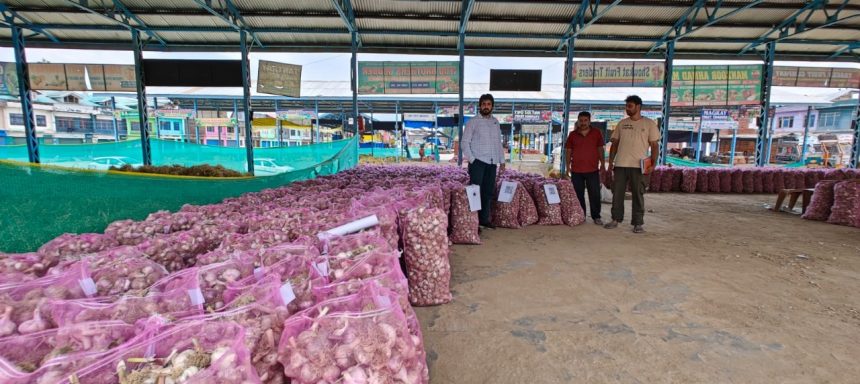Srinagar, June 09: Kashmir continues to be a significant producer of garlic, with the region yielding 28,061 metric tonnes of garlic from 2,551 hectares of cultivated land in the past year, according to officials.
Sartaj Ahmad Shah, Joint Director Agriculture Kashmir, told Rising Kashmir that garlic farming remains an important source of income for many farmers in the region, especially in districts like Kulgam, where agricultural practices are steadily improving.
He said that garlic is widely used in kitchens across the region. Its cloves are a key ingredient in cooking, adding flavor and aroma to a variety of dishes. Besides being used fresh, garlic is often processed in-to garlic paste, which is a convenient and popular form for cooking at home and in restaurants.
He added that continued efforts to support farmers through improved varieties and modern farming techniques have helped increase both the quality and quantity of garlic produced in Kashmir.
Farooq Ahmad Reshi, Chief Agriculture Officer (CAO) Kulgam, said that during the year 2024–25, the district produced 1,837 metric tonnes (MTs) of garlic from 167 hectares. This production generated a reve-nue of Rs 14.69 crore.
Garlic and garlic paste are not only valued for their culinary use but also for their health benefits. They are known for natural antibiotic properties and are believed to help boost immunity, reduce blood pressure, and improve heart health.
Mohd Ashraf, a garlic grower, said they have been cultivating garlic for several years now. “These days, we are harvesting the crop and remain busy with the process,” he said.
“Garlic demands significant effort. The seeds of garlic called cloves cost a good amount. Right now, we are harvesting the main crop, and after June 21st, we harvest the portion that we save for seed purposes for the next year,” Ashraf said. “We harvest it here, take it to the Mandi, and later it is transported to different parts of the country, including Ladakh.”
He added that usually dry garlic is exported to various states of India. “These days, we are getting good returns, though the rates vary. Once the garlic is dried , the roots cut and proper grading is done the crop fetches a higher price.”
“We sow garlic in November or December and harvest it in late May or June,” he said. “Earlier, we used to sow seeds randomly. Now, with high quality seeds and improved package of practices the production has increased significantly. The Agriculture Department is also ex-tending help and technical guidance. Government support through subsidized equipment like farm tractors, subsidy on various inputs has also helped farmers increase their production and productivity” he added.








